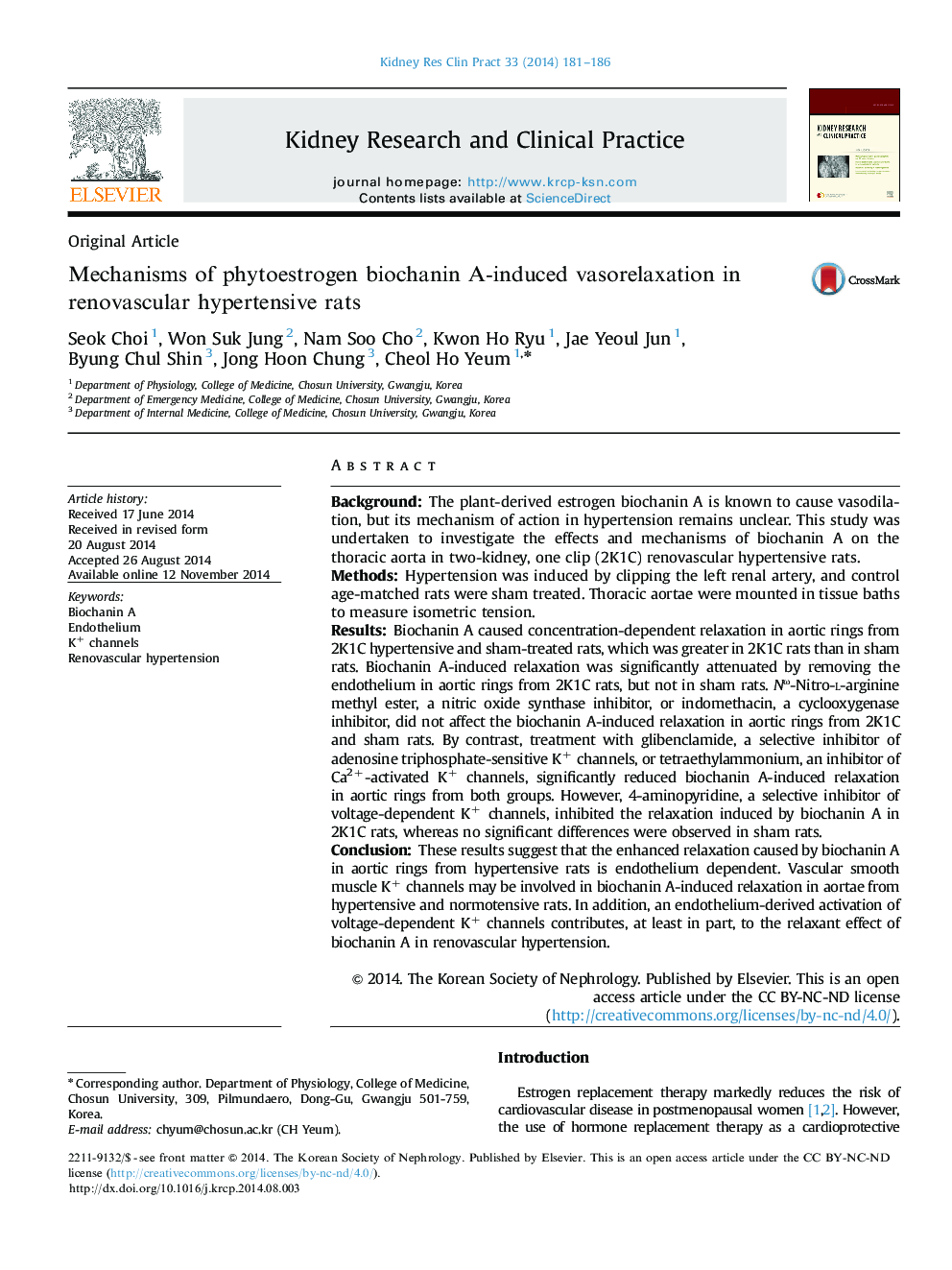| Article ID | Journal | Published Year | Pages | File Type |
|---|---|---|---|---|
| 3890929 | Kidney Research and Clinical Practice | 2014 | 6 Pages |
BackgroundThe plant-derived estrogen biochanin A is known to cause vasodilation, but its mechanism of action in hypertension remains unclear. This study was undertaken to investigate the effects and mechanisms of biochanin A on the thoracic aorta in two-kidney, one clip (2K1C) renovascular hypertensive rats.MethodsHypertension was induced by clipping the left renal artery, and control age-matched rats were sham treated. Thoracic aortae were mounted in tissue baths to measure isometric tension.ResultsBiochanin A caused concentration-dependent relaxation in aortic rings from 2K1C hypertensive and sham-treated rats, which was greater in 2K1C rats than in sham rats. Biochanin A-induced relaxation was significantly attenuated by removing the endothelium in aortic rings from 2K1C rats, but not in sham rats. Nω-Nitro-l-arginine methyl ester, a nitric oxide synthase inhibitor, or indomethacin, a cyclooxygenase inhibitor, did not affect the biochanin A-induced relaxation in aortic rings from 2K1C and sham rats. By contrast, treatment with glibenclamide, a selective inhibitor of adenosine triphosphate-sensitive K+ channels, or tetraethylammonium, an inhibitor of Ca2+-activated K+ channels, significantly reduced biochanin A-induced relaxation in aortic rings from both groups. However, 4-aminopyridine, a selective inhibitor of voltage-dependent K+ channels, inhibited the relaxation induced by biochanin A in 2K1C rats, whereas no significant differences were observed in sham rats.ConclusionThese results suggest that the enhanced relaxation caused by biochanin A in aortic rings from hypertensive rats is endothelium dependent. Vascular smooth muscle K+ channels may be involved in biochanin A-induced relaxation in aortae from hypertensive and normotensive rats. In addition, an endothelium-derived activation of voltage-dependent K+ channels contributes, at least in part, to the relaxant effect of biochanin A in renovascular hypertension.
